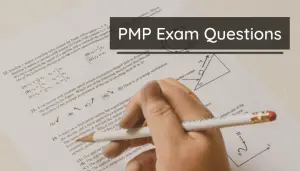

Compare the question and the answers against them and see if an answer is in line with those ITTOs. Step 6: Compare the actions against the processes and knowledge areas: The PMBOK guide explains in detail, the different ITTOs attached to the knowledge areas and their sequence. But, does it satisfy ALL the conditions mentioned in the question? Based on that, eliminate any answer that is out of context. This means, that an answer may be correct.

Step 5: Apply each answer to the context: Try to apply each potential correct answer to the context. Step 4: Shortlist potential correct answers: By eliminating the obviously wrong answers you will end up with potential correct answers.

While reading the answers you will find that some of the answers are obviously wrong. Step 3: Rule out obviously wrong answers: This is where the filtering process begins. For situational questions, there could be more than one correct answer and you have to pick the best answer. Some people have a tendency to just stop and pick the first answer they found correct. Step 2: Read all the answers: You must read ALL the answers provided. It is important to eliminate them and understand exactly what the question is asking for. Step 1: Filter irrelevant information and capture the gist of the question: A lot of times only certain parts of the question are relevant and the rest is just noise. However, you have to choose the best option, and the keywords here are, “ for that situation“.ħ Steps to solve SITUATIONAL based questions: These questions are very difficult because all or some of the options will seem acceptable. Often, situational questions will offer two choices that are both reasonably correct, so it’s extremely important that you identify if the question is asking you the BEST choice in general, the EXCEPTION to some rule, or the ONLY answer applicable to that situation – tricky. Be sure to read and accurately identify the actual question being asked of you, so that you can eliminate the useless information. Your task is to identify what’s relevant, ignore what doesn’t matter, and then act upon the real issues. The idea behind this is that in real life you will be handed both relevant and irrelevant information. Often, these questions tend to be very long-winded. These questions demonstrate why having project management experience is critical to passing the exam. These will test your ability to apply theoretical understanding to real-life project management situations. SITUATIONAL based questions for PMP: A lot of questions are situational in nature.


 0 kommentar(er)
0 kommentar(er)
